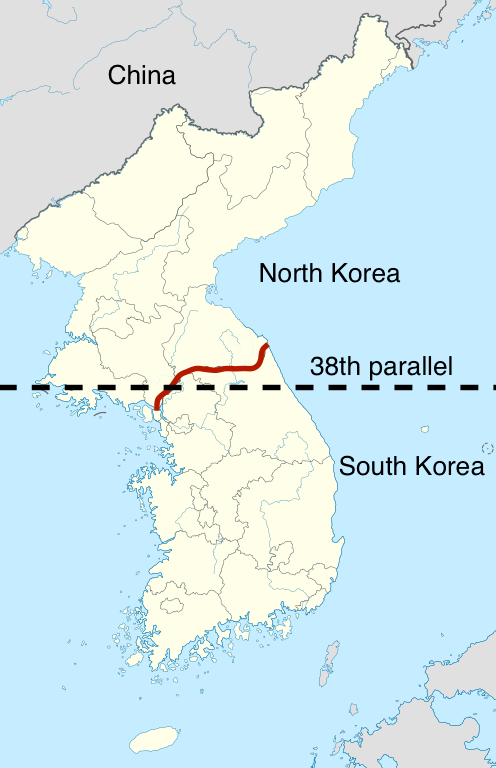

The Korean War Begins
When Korea was liberated from Japanese control at the end of the Second World War, the United States and the Soviet Union agreed temporarily to divide Korea at the 38th parallel of latitude north of the equator. This division resulted in the formation of two countries: communist North Korea (supported by the Soviets) and South Korea (supported by the United States).

Five years after the country’s partition, the communist leader of North Korea, Kim Il Sung, decided to attempt to reunify Korea under his control. On June 25, 1950, Kim launched a surprise invasion of South Korea.
Believing that the Soviet Union had backed the invasion, United States President Harry Truman and his advisers followed through on their policy of containment, refusing to allow communism to spread anywhere in the world. Within two days of the invasion, the United States had rallied the United Nations Security Council to declare support for South Korea. An American-led UN coalition deployed to South Korea.
By August, North Korean forces had swept across almost all of South Korea; American forces held only a small defensive perimeter in the country’s southeast, near Busan. In September, however, under the command of General Douglas MacArthur, the United States launched a bold counter-offensive that included a daring amphibious landing in territory held by North Korean forces at Inchon, on South Korea’s western coast. Soon, US forces drove the North Koreans back to the border at the 38th parallel.
Beyond the 38th Parallel
The Truman administration then made the decision to proceed across the 38th parallel into North Korea. But in late November 1950, as American forces neared the Chinese border, leaders in communist China (fearful that the United States might invade) sent tens of thousands of Chinese soldiers streaming into North Korea and drove the American and UN forces southward, back across the 38th parallel.

By spring 1951 the Americans had pushed to the 38th parallel once again. That same spring President Truman fired General MacArthur when MacArthur publicly challenged the administration’s strategy. The next two years saw periods of fierce fighting, but the border held. In 1953, an armistice established a status quo antebellum border near the border that had originally divided North and South Korea. Status quo antebellum is a Latin phrase that means that a war’s outcome resulted in the return of “the existing state of affairs before the war.” In the case of the Korean War, after the conflict the border between North and South Korea was maintained at the 38th parallel.
The heavily armed two-and-a-half mile wide DMZ (Demilitarized Zone) separating North and South Korea exists to this day.
About 36,500 American soldiers died in the war, as well as hundreds of thousands of soldiers and civilians from North Korea, South Korea, and coalition forces.
Korea in the Context of the Cold War
In Korea, the United States demonstrated its continuing commitment to key elements of its Cold War strategy. It demonstrated its global leadership by committing its resources and soldiers in the fight against the spread of communism. The United States also confirmed its commitment to a foreign policy based on collective security by mobilizing other countries to support its position both politically and militarily.
In Korea, the United States demonstrated the ideals expressed in the Truman Doctrine, which promised support for the “free peoples of the world” who wished to keep communist aggression at bay. Although the war ended where it began, the United States and its allies did succeed in preventing communism from overtaking South Korea.
Originally published by the Khan Academy under the terms of a Creative Commons Attribution-NonCommercial-ShareAlike 3.0 United States license.






